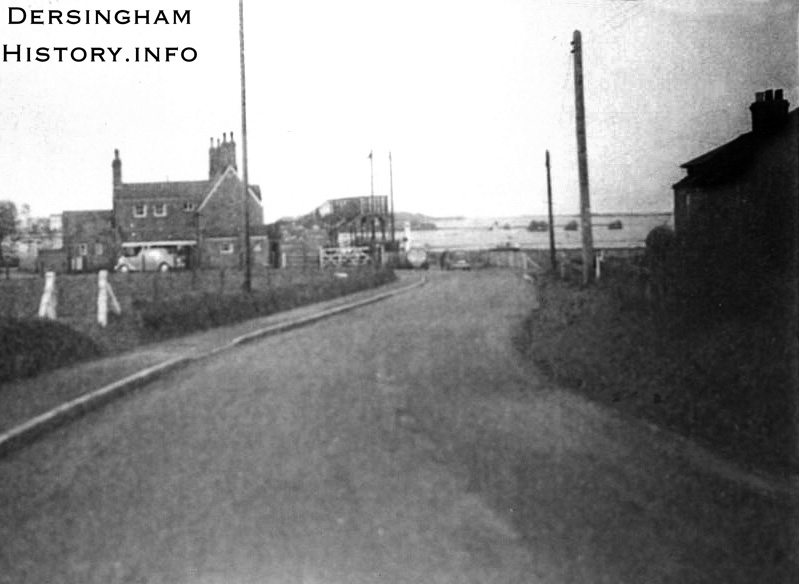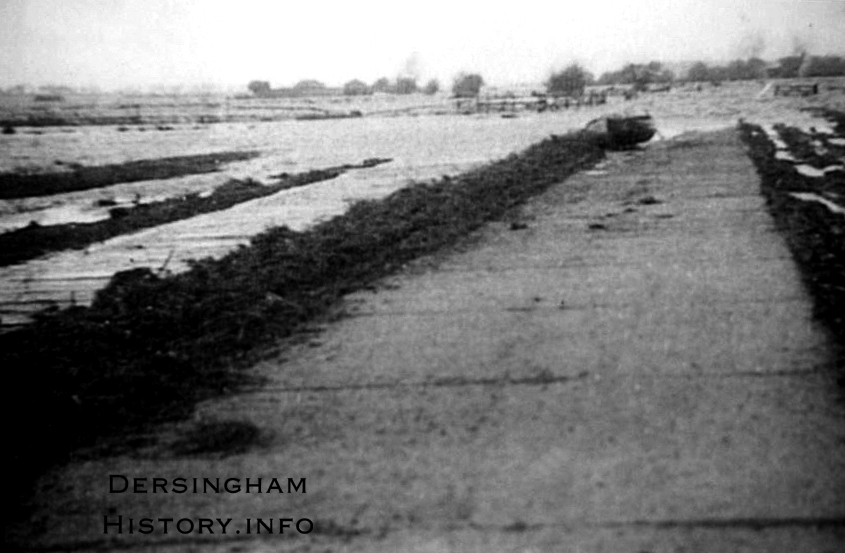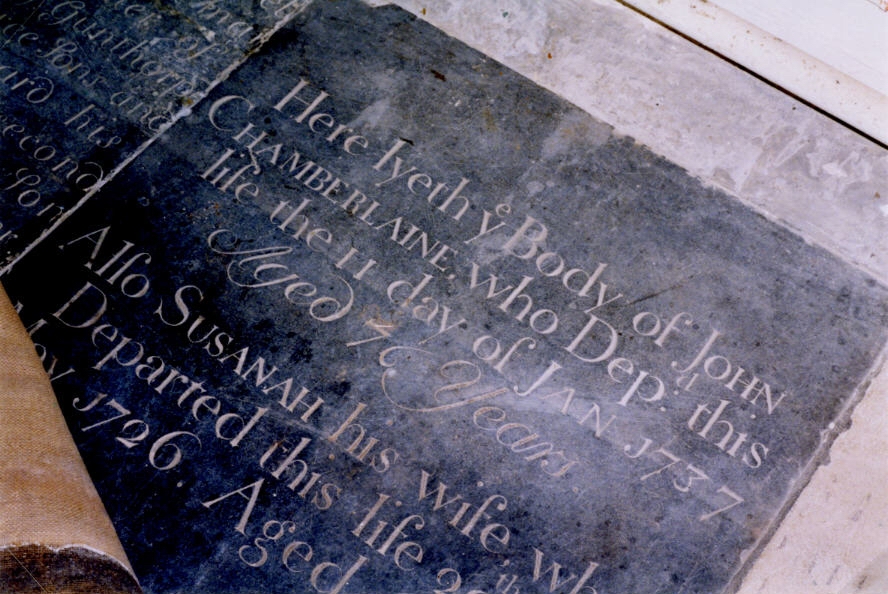One of the pleasures of living here in West Norfolk is the closeness of the sea. It is a constant delight to walk the coastal path, enjoy the salt marshes, linger on the beaches and watch the birds as they wheel and soar above the waves. The sea is our friend but one that needs to be respected. Alfred Tennyson wrote of the sea in summer, ”drawling up the beach, brushing the shingle with coquettish lips, so gentle, so harmless ...... “ But he warns in winter when it, ”is cold and grey , when fishermen stand helpless on the beach besides their little boats and the wildfowl chatter uneasily ........ come back then and see how dreadful is the change from meekness to ferocity.”
The people of this part of the world have witnessed this ferocity on many occasions throughout the centuries. In 1236 the chronicler Holinshed wrote of a great tide that pounded the East Coast. “It washed up the ocean in such tremendous waves that the banks gave way and the whole country lay completely exposed to its awful fury.” He described how shipping was damaged, trees uprooted and countless flocks of sheep and herds of cattle perished. Houses were destroyed and complete beaches washed away. He records that in one village,”there were buried one hundred corpses in a day.” In 1287 more than a hundred people were drowned in Hickling when a storm blew up in the middle of the night. Men, women and children were drowned in their beds. Even those who had escaped and tried to save themselves by climbing into trees were soon overcome by cold and fell into the water.
A violent hurricane blew down part of Norwich Cathedral in 1362 causing considerable injury to members of the choir. Norfolk marshland suffered great damage in 1613 when according to the historian Dugdale there was “a dreadful inundation of the sea on 13th of November.” The collapse of the sea bank at Terrington was total and the small town suffered great losses. A bridge was shattered, over 2000 head of livestock drowned, 480 acres of land sown with corn were swamped and 13 houses ruined. In Walpole the sea bank was breached in twenty places and the total loss suffered by Norfolk Marshland was calculated at £37,000. In 1619 there was an appeal for the fishermen of Southwold whose harbour had been severely damaged by the violence of the sea.
We all know the story of Dunwich now a very small village but once East Anglia’s first capital city 1,300 years ago. It was a wealthy town only a little smaller than Ipswich and it had 52 churches, religious houses, Chapels and hospitals. There was a King’s Palace, a Bishop’s seat, a Mayor’s mansion and a mint. There were windmills and countless fine houses but all have long since disappeared. Over the centuries the sea has taken them all. The last church to be claimed by the sea at the beginning of the twentieth century was All Saints. It stood a lonely ruin on the edge of the cliffs for some time but could not defy the power of the sea for long. Some say the muffled ringing of its bells can still be heard above the sound of the wind and waves.
In 1703 seven ships were lost in the Wash and 20 men perished during a storm that was described at the time as the worst hurricane ever known. Daniel Defoe wrote of it and recorded that boats were lifted out of rivers, carriages blown into fields, warships destroyed and 8,000 people killed. £1000 worth of damage was done to buildings in Lynn and the roof was torn off Ely Cathedral. In 1757 a herd of cattle was swept away on a high tide at Ingoldisthorpe. The currents off shore were notoriously dangerous and for much of the 18th century a pilot boat patrolled the sea off the coast of Ingoldisthorpe.
Dersingham had faced the power of the sea on many occasions but it was in 1671 that the courage and resilience of the villagers was most severely tested. At this time the population of our village was about 400. The people for the most part lived in small carstone cottages along the present Chapel Road and Manor Road but there was a group of houses around the site where Budgen’s now stands that formed Gelham Manor. Another cluster would have been found near The Feathers which, with the Manor House that once stood in the old school playground, formed Pakenham Manor. There were a few cottages on Fern Hill and another group up the top of Doddshill so that the total number of dwellings was around 73. The largest house would have been the Pell’s Tudor house built close to where the present surgery stands. The Great Barn in front of the church had just been completed for the date stone bearing the inscription July 31st 1671 is still clearly visible. It is also possible that some of the dwelling we now know as Jannoch’s Court had been erected and as 1671 is also the date given for the building of Westhall Manor this could also have been underway.
The community consisted of a few yeomen farmers, some skilled tradesmen, one or two shopkeepers and a large number of agricultural workers. The economy of the village was founded on sheep and corn. The waters of the Wash had been much nearer the village in the past. There are documents from the thirteenth and fourteenth centuries that record the granting of fishing protection to Dersingham men. Another writes of “two ships of Mark and Adam made for fishing in the port of Dersingham” Alan Lawys of our village was granted a licence for a “dogger” a two- masted Dutch fishing boat by Henry VI.
However, by 1671 the sea had receded and from Life Wood through to Badger Fen by our present round-a-bout and down to the Wash stretched the Great Marsh. This land, which had once been under the waves, now afforded rough summer grazing for the flocks and herds of animals. The ancient cliff line can still be detected as the land rises behind the village and the arable fields stretch away in the distance. During late August and early September of 1671 the weather had been very unpredictable. There were long periods of stormy rain and high wind that had the villagers complaining just as we do today. It certainly made life difficult for the farmers but it reached a peak on or about September 12th. The strength of the wind increased, and the tide rose so high that it swept over all existing sea banks and made huge breaches in the defences such as no-one could remember in their lifetime. Freebridge Marshland was under water, huge numbers of livestock perished, and winter fodder was ruined. Ships were wrecked in the Wash and roads near the coast destroyed so that communications were disrupted. Everyone turned out to fight the sea but with little more than just shovels, carts, wheelbarrows and their own muscle power there was only so much they could achieve against such ferocity.
Our Parish Register records the disaster like this. “The fflood was on the twelfe day of September on the year of our Lord one thousand six hundrede seaventye and one, All the generall marshes in Dersingham and also the common marsh there were overflowed by reason the tyde did come over the tops of all the banks. And after made severall breaches of the said bankes the like was also knowne by the space of ffifty or as some say sixty years before, severall cattel were lost in the Common marsh there, this fflood was allonge the sea coste, then it continued in the Common Marsh by the space of two days “
Although the record states that such an event had not been known for fifty or sixty years and that several cattle perished on the Common marsh no human life was lost. However some cottages were flooded and it would seem to me that those most at risk would have been the homes around Gelham Manor.
The Manor House stood in the open fields at the back of Sandringham view and part of the moat used to be visible until the building work started. I have wondered if it was because of these floods that the old house was abandoned and later demolished. The record continues “This flood was allonge the sea coast then it continued in the Common marsh by the space of two days.”
It goes on to record that one villager John Chamberlaine with others had worked valiantly “getting out the cattell the said two days.”
It is not so difficult to imagine the sound of the rain, feel the strength of that wind, and imagine the struggles of the villagers. There are some in our village, like Dick Melton who remember the dreadful night of January 31st 1953 when the wind and tide combined again to bring utter disaster to the area. The waters of the Wash came up to the old railway station and many lives were lost in Snettisham, Heacham and Hunstanton.
So in 1671 when the danger had passed and the village could relax everyone must have felt a great sense of relief that no lives were lost and thanks to the efforts of John Chamberlaine and others much had been saved. The register ends with a request that the Clarke of the Parish of Dersingham
“might yearly and every yeare on the 12th day of September sing to the praise of the Lord the nine and twentyieth Psalme; to that purpose to put the inhabitants of the same parish in the mind of the mercies of Almighty God.”
Three verses of the hymn are then printed.
Verse the 3
His voice doth rule the waters all
Even as himself doth please
He doth prepare the thunder claps
And governe all the seas.
Verse the 10
The Lord was set above the flouds
Ruling the raging sea
For ever and aye
Verse the 11
The Lord will give his people power
In virtue to increase
The Lord will bless his chosen flocke
With everlasting peace
The entry ends, “This is desired by me John Chamberlaine the older, one of the inhabitants there September 12th 1671.”
So ended those traumatic few days. In the N.W. corner of the church, covered over at the moment, is the tomb of John Chamberlaine who died in 1737 aged 76 years. He would have been 10 years old when he helped his father at the time of the Great flood. He was an old man of 74 when once more on February 16th 1735,”the very same accident happened”.
In 1971 the village held a flood festival to mark the tercentenary of the Great Flood. The Lynn Town Band played in the church, and a discotheque was held in the church hall. A “jamboree Turkey lunch” with a speaker was arranged and a special children’s event was held on the Saturday. On the Sunday, the exact anniversary, there was a Festal Eucharist of Thanksgiving and Festal Evensong. John Chamberlaine would have looked down with much approval.
The two pictures below show the approximate flood line in 1953, clearly no illustration even for 1671. Sorry about the poor quality; we would be delighted if someone could let us have a better version.




